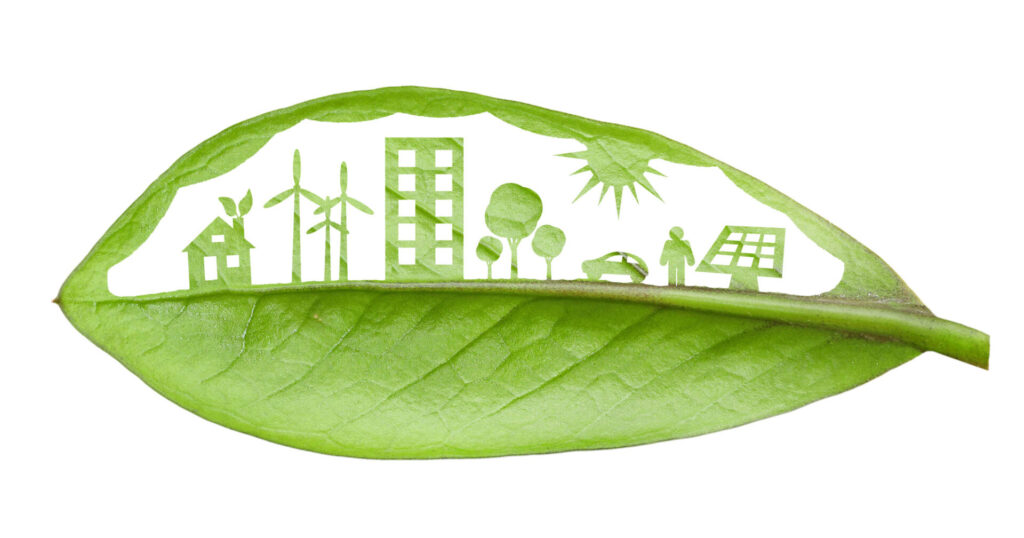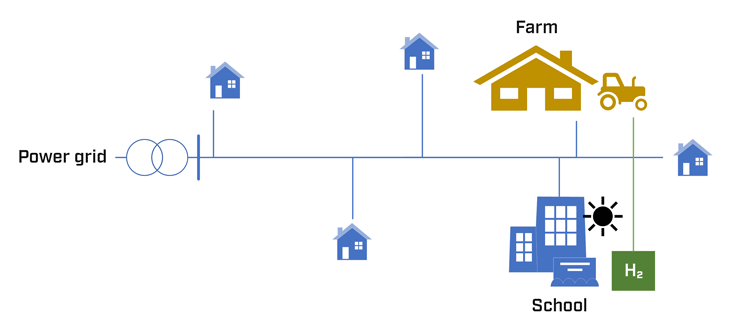Co-authors: Henning Taxt og Kjersti Berg –

More and more sectors of society are being electrified to reach the global climate targets. This increases the need for renewable electricity, requires large investments and poses new challenges for the grid. Power consumers joining forces to form local energy communities can constitute one of the solutions to these challenges. Research project FINE is trying to establish what role local energy communities can play in the power grid of the future.
What are local energy communities?
The EU’s Energy Package “Clean Energy for all Europeans” defines two designations for different types of energy communities: Citizen energy communities and Renewable energy communities. These are legal entities that are involved (among other things) in power production, distribution and use, and which have as a goal to provide the local community with environmental, economic and social benefits. The term “local energy communities” is also used and defined in several different ways. Some definitions are as broad as the EU ones described above, while others set more specific boundaries. These can have to do with limiting the geographic extent, requiring the production and storage of electricity, setting norms for internal control or making it a condition that the energy community can be treated by the power company as a single point of connection.
To get a better understanding of what is a local energy community, research project FINE examined and compared different local energy communities across Europe. Finds from this study show that there is a lot of variation in the way local energy communities are structured, in the motivations that underlie their creation and in the technologies that are put to use. All these factors are also affected by the reasons for which these communities call themselves local energy communities. The project focused on local energy communities using electric power.
The structure of the local energy communities in Europe varies from small local communities and neighbourhoods producing their own renewable energy locally, to larger projects where external actors like power companies or contractors establish a local energy community to save money on the services that are offered. The geographic extent of the various communities ranges from smaller neighbourhoods and apartment complexes to communities spanning a whole country.
Solar panels and wind turbines are the most common production units in the local energy communities we investigated. Hydropower is also used, as well as bioenergy and diesel generators. For storage, batteries and electric vehicles are common. Few of the communities we investigated had internal management and control systems. Most of them generate and consume energy, and transfer any surplus to the grid. For local energy communities to be able to contribute to the power system, management systems and the ability to adapt to the grid’s needs are necessary.


How can local energy communities have a positive impact on society?
For the climate and the environment:
An important motivation for all the communities examined in the study is to protect the climate and the environment by producing and consuming more renewable energy. The EU estimates that a large portion of the increasing renewable energy production in the coming years will happen at the local level. Through the Energy Package, it is estimated that local energy communities will account for 17% of all wind power production and 21% of all solar power production by 2030. It is also expected that half of European households will produce renewable energy by 2050. This will not only reduce emissions, but provide another environmental benefit by allowing power production in areas that are already affected by human activity, thereby reducing the need to further encroach on natural ecosystems.
For society locally and regionally:
Local energy communities also have economic and social consequences. When a greater number of private individuals and larger actors join their forces, it will become economically feasible for more people to generate their own power. Studies of local energy communities show that communities that are themselves participating in the establishment of renewable energy projects are more likely to have a positive view of both wind and solar generation in their local area. The EU also emphasizes democratisation and increased consumer power in its statements about the importance of local energy communities. By sharing energy at a local level, consumers are assured that their electricity comes from renewable sources, and the shared ownership makes it possible for them to get a greater influence on the local decision-making process.
For the power system:
From a power system perspective, local energy communities will be able to contribute to better local coordination of resources, balancing production and consumption, and making consumer flexibility more accessible. It will reduce the strain on the grid at times where consumption is at a peak, and in times of high electricity production. This will allow the existing grid to be better exploited and delay the need for further investments. Local energy communities can function as a cost-effective alternative to traditional investments into the grid, and will as such have positive economic repercussions even for consumers outside said communities. Other factors that can positively impact the power system and the electric companies are the increased possibilities for innovation on the side of the power consumers, lower transmission losses when more energy is produced locally, and the fact that local energy communities will give their participants a better understanding of the power system.
Challenges:
For society to reap the benefits listed above, it will be necessary to put into place rules and incentives that are thought out in a socially rational way. If the incentives given to members of local energy communities lead to an increased financial burden for other power consumers – either because the grid needs upgrading, as a result of increased local production or because the participants in the local energy community have lower network costs – the results could be less than optimal. In certain European countries, network costs are higher in areas with a large number of renewable power connections. The costs generated by this renewable energy production are divided among consumers in the area, but the benefits only flow to the companies generating the power. Local energy communities can be a solution to allow these benefits to be shared locally.
Local energy communities could also put a strain on the grid if they decided to maximise their profits or their level of self-reliance while ignoring the needs of the power system. To reap the potential of local energy communities while ensuring safe and fair operation will require a constructive interaction between grid companies and local energy communities.
Workshop
Research project FINE continues to examine the potential of local energy communities. We have listed a number of already existing local energy communities in Norway and Europe, and wish to explore further what a local energy community can be, today and in the future. It is also interesting for us to get different perspectives, from other scientists but also from industry, developers and other interested parties. To get as much input and innovative ideas as possible, we are organising a workshop in the spring of 2021 for all who are interested. Information about this workshop will be published on the FINE website.

Pingback: Local Energy Community Research from Norway – Research and Teaching Interests of Peter Deeney
Thank you for sharing such valuable and relevant content! It was interesting to read.
Very informative! Thanks for sharing.